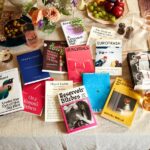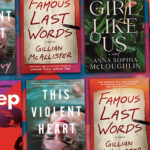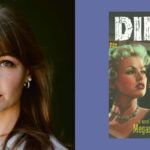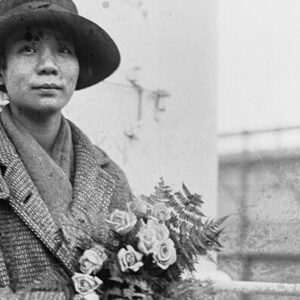On Learning How to Live From Ralph Waldo Emerson
“Self-hating, dishonest, twisted stories diminish our lives and prevent us from knowing who we are.”
I first fell in love with Ralph Waldo Emerson at a crisis point in my own life. I was a heartsick twenty-two-year-old graduate student, floundering in academia, panicky about my future, overwhelmed by self-doubt, and terrified I would never discover who I was—really—or why I’d been put on this baffling planet.
I’d struggled with confusion since childhood. Everywhere I turned, duplicity and hypocrisy were obvious to me as a boy. The grown-ups juggled alternating masks in different surroundings and I was a two-faced deceiver myself, concealing who I really was—an angry, fatherless, damaged boy. I acted the part of an all-American overachiever with a promising future ahead of him while inwardly I was a miserable train wreck. I told myself that an advanced degree would help to boost my drooping self-esteem, but that was a fantasy.
When that fall semester started, I was as frustrated, angry, and self-punishing as I had ever been in my life, suffocating in academia, bereft of inspiration, holding my breath—hoping for something important to happen to give me a purpose. Yet what that elusive thing was, exactly, I could not say.
Emerson taught that pain, loss, suffering, and conflict are teachers and guides in disguise.I was also chronically out of cash, which is what led me to apply for a research assistant’s job working for a visiting professor from Yale named Barbara Packer. Professor Packer needed a flunky to do the grunt work on a manuscript she was late in delivering, a study of Ralph Waldo Emerson’s major essays. My job was to hunt down out-of-print reference books, excavate ancient newspaper clips, and transcribe notes from blurry microfiches onto multicolored three-by-five index cards. I knew very little about Emerson at the time.
Meeting Emerson changed my life. His big ideas challenged my puny worldview and exposed me to a vision of human potential I had never known existed. His insights were radical and paradigm-shifting: human life has a spiritual purpose (to recognize our true nature, evolve from ignorance to self-knowledge); we are each endowed with unique purpose and genius, and our mandate is to unfold our character as passionately, originally, and bravely as possible.
Emerson taught that pain, loss, suffering, and conflict are teachers and guides in disguise, crucial for our awakening; and that nonconformity, inconsistency, introversion, stubbornness, quirkiness, and a “little wickedness” are beneficial virtues for self-realization. Following the crowd is a mistake, and changing your mind is a very good thing. These were eye-opening insights for me, opposed to everything I had been taught. The idea that we are spiritual beings first, personalities second, that no real separation exists between human life and God, cast a sacred light on existence that I had never seen before.
In the secular America where I’d grown up, God was off-limits as a serious topic. I had no faith in a divine creator, was opposed to most organized religions, and considered myself a firm agnostic. Yet when Emerson counseled, “You look within not to find yourself but to find God,” I had a sense of what he meant though the terminology was arcane and loaded. When he described the One Mind, the divine intelligence, running like an electric cord through creation, he spoke deeply to my unarticulated experience.
He taught that Nature is God made visible in the world—that we see God through the mirror of nature, in other words—and that we are reflected in the creation. He explained that genius is the light of divine intelligence within us, and that we’re inseparable from this power source; that happiness results from obeying its guidance, trusting our own choices, resisting the urge to imitate, knowing ourselves as outcroppings of the natural world (and, therefore, of God), joined in a kind of cosmic fandango with all of existence.
The more of Emerson I read, the more alive I felt. I began to make overdue decisions. I left graduate school, made amends with my family, broke off a bad relationship, moved to New York City, started finding work as a freelance journalist, and stopped blaming the world for my problems. I focused on looking inside for the source of my troubles, examining my “angle of vision,” the stories I told myself about myself and the world: who I took myself to be, what things signified, the details that mattered, and those that did not.
Emerson emphasized that your angle of vision creates your world.Emerson emphasized that your angle of vision creates your world, an insight he shared with the ancient Stoics, and that genuine freedom rests in the power to choose how we wish to respond to life’s conditions. Knowing that perspective shapes reality, we’re better able to interrupt our knee-jerk reactions and respond to challenges more skillfully, constructively, mindfully. Except in rare cases of affliction—under physical torture or sickness, for example—a person always has the power to choose her responses and decide when, how, and by whom (or what) she allows herself to be hurt.
It was glaringly obvious that the majority of my problems were self-created and arose from how I was choosing to look at situations, not from the circumstances themselves. I learned from Emerson that it is the tendency to cling to false beliefs, and confuse our narratives for reality, that gives rise to most of our suffering. Self-hating, dishonest, twisted stories diminish our lives and prevent us from knowing who we are.
A firm grasp on your compass is necessary to reach the desired shore.
My own lifeboat capsized again two years after I arrived in New York. I received a fatal diagnosis that promised me no more than five years to live. With mortality in my face, all bets were off: I quit my vapid magazine job, sold my belongings, gave up the lease on my apartment, said goodbye to my friends, and traveled with a friend to India in hopes of finding a spiritual path that would help me survive my mortal terror. I hopped around from monasteries to ashrams to healing workshops, overwhelmed with questions, seeking spiritual strength, clawing my way through an encroaching darkness.
My shredded copy of The Portable Emerson was always with me. If I was having a particularly gruesome day, a well-spent hour with Emerson could pull me off the ledge, remind me of possibility, settle my nerves, shift my perspective, and loosen the noose of self-pity I struggled to keep from around my neck. By the mid-1990s, strangely enough, I was still around and reasonably healthy, and when treatments for my condition finally appeared, I was given a second lease on life, surreal and surprising in the extreme. Awe is the only word that fits.
This torn-in-half feeling of tenuous survival is akin to how many are feeling today. As the world has become more unhinged, a collective sense of outrage and disbelief has settled over citizens in countries around the world, a kind of post-traumatic shock, paranoia, exhaustion, mistrust, and dread of the next heart-stopping news. Fortunately, alongside this collective trauma is a growing interest in our own potential, an urgent pull toward awakening, a fierce determination to learn from calamity, question our values, reshape our choices, optimize our potential, and cherish our lives, knowing how quickly they can be threatened or taken from us completely.
The pandemic has bequeathed us (along with some terrible things) a sudden planetary awareness of our shared impermanence and fragility. This global collision with mortality has given rise to a proportionate upsurge of public interest in self-examination, authenticity, identity, purpose, and what it means to be a fully human being. Not since the consciousness revolution of the 1960s have we witnessed such a nations-wide display of soul-searching and spiritual hunger as we see now.
__________________________________

Adapted from Lessons from an American Stoic: How Emerson Can Change Your Life by Mark Matousek. Copyright © 2023. Reprinted with permission from HarperOne, an imprint of HarperCollins Publishers.




















